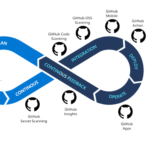Introduction: Why Observability Matters in Modern DevOps
Imagine your e-commerce platform is humming along, but suddenly, checkout failures spike and customers start complaining. Wouldn’t it be game-changing to spot and fix this before it impacts your business? That’s the power of observability in DevOps: proactive monitoring that helps you maintain system health and uptime-before users even notice issues.
In this expert guide, we’ll break down how you can use Prometheus and Grafana-the open-source powerhouses-alongside AI-driven anomaly detection to build a unified observability platform. We’ll walk through installation, configuration, agent setup, dashboard creation, alerting, and share real-world examples from global tech ecosystems. Whether you’re a DevOps engineer, SRE, or CTO, this is your roadmap to bulletproofing your infrastructure.
Key Concepts: Observability vs. Monitoring
- Monitoring answers: “Is the system working?”
- Observability answers: “Why isn’t the system working as expected?”
Observability is about collecting and correlating metrics (numerical data), logs (event records), and traces (request flows) to get a holistic view of your system’s health.
The three pillars of observability:
- Logs: Records of discrete events, errors, or transactions, offering context and history for troubleshooting. [Opsera]
- Metrics: Quantitative data points over time (CPU, memory, request rates) to track performance and trigger alerts. [Motadata]
- Traces: End-to-end request flows, critical for identifying bottlenecks in distributed systems. [Intercept]
Unified Observability Platforms: The Next Evolution
The trend is moving from siloed tools to unified observability platforms that aggregate all your data-metrics, logs, traces-into a single pane of glass. These platforms often integrate AI to detect anomalies, predict outages, and automate remediation.
Benefits: Fewer blind spots, faster troubleshooting, and more reliable uptime. [Elastic]
- Emerging Platforms: Grafana Cloud, Datadog, New Relic, Dynatrace, and open-source stacks built on Prometheus & Grafana.
Step-by-Step: Building Observability with Prometheus and Grafana
1. Install Prometheus on the Monitoring Server
# Download and extract Prometheus
wget https://github.com/prometheus/prometheus/releases/download/v2.46.0/prometheus-2.46.0.linux-amd64.tar.gz
tar xvfz prometheus-2.46.0.linux-amd64.tar.gz
cd prometheus-2.46.0.linux-amd64
# (Optional) Move binaries to system path
sudo mv prometheus /usr/local/bin/
sudo mv promtool /usr/local/bin/
sudo mkdir -p /etc/prometheus /var/lib/prometheus
# Create a basic configuration file
nano /etc/prometheus/prometheus.yml
global:
scrape_interval: 15s
scrape_configs:
- job_name: 'prometheus'
static_configs:
- targets: ['localhost:9090']
- job_name: 'node'
static_configs:
- targets: ['localhost:9100']
# Start Prometheus
prometheus --config.file=/etc/prometheus/prometheus.yml
Verify at http://<your_server_ip>:9090
2. Install Node Exporter on Each Client
# Download and extract Node Exporter
wget https://github.com/prometheus/node_exporter/releases/download/v1.7.0/node_exporter-1.7.0.linux-amd64.tar.gz
tar xvfz node_exporter-1.7.0.linux-amd64.tar.gz
cd node_exporter-1.7.0.linux-amd64
# Start Node Exporter
./node_exporter
Node Exporter listens on port 9100 by default.
Add all Node Exporter targets to prometheus.yml under scrape_configs and restart Prometheus.
3. Install Grafana
sudo apt-get install -y apt-transport-https software-properties-common
wget -q -O - https://packages.grafana.com/gpg.key | sudo apt-key add -
echo "deb https://packages.grafana.com/oss/deb stable main" | sudo tee /etc/apt/sources.list.d/grafana.list
sudo apt-get update
sudo apt-get install -y grafana
sudo systemctl enable grafana-server
sudo systemctl start grafana-server
sudo systemctl status grafana-server
Access Grafana at http://<your_server_ip>:3000 (default login: admin/admin).
4. Connect Grafana to Prometheus
- In Grafana UI, go to Configuration > Data Sources > Add Data Source.
- Select Prometheus, set URL to
http://localhost:9090, and click Save & Test.
5. Import or Create Dashboards
- Import a prebuilt dashboard: + > Import, use dashboard ID (e.g.,
1860for Node Exporter Full). - Create custom dashboards: + > Dashboard > Add new panel, enter Prometheus queries (e.g.,
node_cpu_seconds_total).
6. Set Up Alerting
In Prometheus:
groups:
- name: example
rules:
- alert: HighCPUUsage
expr: avg(rate(node_cpu_seconds_total{mode="system"}[5m])) by (instance) > 0.9
for: 2m
labels:
severity: critical
annotations:
summary: "High CPU usage detected on {{ $labels.instance }}"
description: "CPU usage has exceeded 90% for more than 2 minutes."
- Configure Alertmanager for routing alerts (email, Slack, etc.).
In Grafana:
- On any dashboard panel, click the Alert tab > Create Alert.
- Set alert conditions, notification channels, and save.
7. (Optional) AI-Driven Anomaly Detection
- Use Grafana Machine Learning plugins or integrate with external AI/ML tools for advanced anomaly detection.
- For managed Grafana, explore built-in anomaly detection features.
8. Verify and Monitor
- Check Prometheus targets at
http://<prometheus_ip>:9090/targets. - Confirm Grafana dashboards display live data.
- Test alerting by simulating a threshold breach.
Unified Observability Platforms & AI-Driven Anomaly Detection
Unified observability platforms like Grafana Cloud, Datadog, and New Relic bring metrics, logs, and traces together, often with AI-driven anomaly detection to reduce alert fatigue and catch subtle issues. AI models analyze historical data, detect seasonality, and highlight outliers in real-time, enabling predictive maintenance and faster root cause analysis.
Real-World Example: Observability Enables 100% Uptime for Channel 7 During Global Sporting Events
Case Study: Channel 7, Australia’s leading commercial television network, faced the challenge of delivering flawless live streams for massive global events like the Tokyo 2020 Olympics and the AFL Grand Final. Their legacy monitoring tools struggled to keep up with the scale and complexity required for such high-profile broadcasts, risking potential downtime and poor viewer experiences.
To overcome these hurdles, Channel 7 adopted a unified observability solution. This platform provided deep, real-time insights into their infrastructure and applications, capturing metrics, logs, and traces across the entire stack. With observability, Channel 7 could:
- Monitor user journeys and application performance in real time.
- Detect and resolve issues before they impacted millions of viewers.
- Accurately determine infrastructure capacity needs during peak loads.
The results were remarkable: Channel 7 achieved 100% uptime, streaming 4.7 billion minutes during the Tokyo Olympics and handling record-breaking traffic without service interruptions. The observability platform empowered their teams to deliver an A-grade streaming experience and scale confidently for future global events.
Read more
Challenges & Solutions
- Alert fatigue: Use AI-driven anomaly detection, tune thresholds, and group related alerts.
- Siloed data: Adopt unified observability platforms or integrate open-source tools via APIs.
- High learning curve: Use managed services or community guides for easier onboarding.
Future Outlook: What’s Next in Observability?
- AI & ML: Smarter, self-healing systems with automated root cause analysis.
- OpenTelemetry: Standardized telemetry for metrics, logs, and traces across all platforms.
- Edge Observability: Monitoring IoT and edge devices at scale.
- Security Integration: Merging observability with security monitoring (DevSecOps).
- India Focus: More Indian SaaS startups building observability tools tailored for local needs.
Conclusion: Key Takeaways
- Observability is the backbone of reliable, scalable DevOps.
- Prometheus and Grafana are robust, open-source tools for metrics and visualization.
- Unified platforms and AI-driven anomaly detection are shaping the future.
- Start small-monitor key metrics, set up dashboards, and iterate.
- Proactive monitoring means fewer outages, happier users, and a stronger business.
Further Reading & References
- Prometheus Documentation
- Grafana Documentation
- Observability Success Stories (Simform)
- OpenTelemetry Documentation
- Book: Observability Engineering (O’Reilly)
- Contact StoneTusker for Observability Consulting
Want to build a world-class observability stack or need help with AI-driven monitoring? Contact our experts today and supercharge your DevOps journey!



